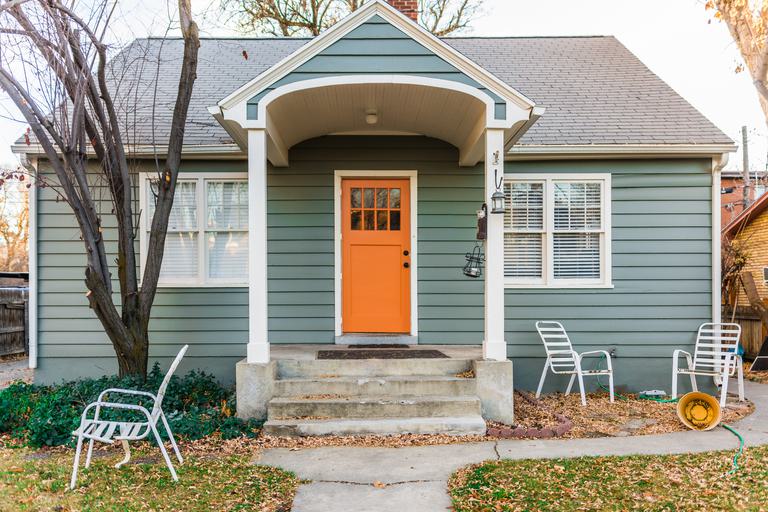
Budget & Tax , Education
Mike Brake | July 20, 2018
Official says some assessors shortchange schools, counties
Mike Brake
Note: A version of this article was first published in the Kingfisher Times & Free Press on July 4, 2018.
Oklahoma teachers spent much of the spring at the state Capitol requesting increased school budgets. But even as they won massive statewide tax increases, many of their own home county assessors were likely failing to collect millions of dollars in local property taxes for education.
That’s according to a study conducted last year by the office of Oklahoma County Assessor Leonard Sullivan, under the guidance of his chief deputy, Larry Stein, who is also a candidate to succeed Sullivan in this year’s elections.
School districts across the state appear to have been shortchanged for decades by an antiquated and in some cases poorly managed system of property assessment, the study concluded.
Since local property tax revenues make up an average of 42 percent of school funding, that shortfall is significant. Moreover, it requires the Legislature to make up the difference from state revenue sources, as they did this spring.
Oklahoma’s property tax system is simple to explain, but harder to administer. County assessors are required to assess all real property (land and buildings) within the county each year, assigning a market value to each parcel based on current or recent local property sales and other factors. Those property values are then multiplied by a percentage that varies among counties (11 to 13.5 percent), which yields the actual taxable value of each piece of property. So, a house that would sell for $100,000 is taxed, for example, at a value of $11,000.
That value is then multiplied by the millage rate assigned to the property, which can vary depending on its location within specific cities, school districts, and other jurisdictions. Stein said at least half of all property tax revenues flow to local schools, with other portions used to finance career techs, county governments, libraries, and other agencies.
The problem, Stein said, lies in a 35-year-old system of software that has hamstrung assessors, as well as with understaffing in many smaller county assessor offices.
The 2017 study looked at actual versus assessed property values in 12 Oklahoma counties, within three of the state’s 27 judicial districts (one each in the west, the northeast, and the southeast).
“The variances between market and assessed values in those counties ranged from 20 to as high as 70 percent,” he said. “Extrapolating that statewide, we estimated that between 40 and 60 counties lacked the technological ability to do their jobs.”
While Oklahoma County has successfully passed all tests, in 2013, 35 of 77 county assessors failed to pass performance audits. That means that in most, if not all, of those counties, local school districts are receiving fewer property tax dollars than they should.
“I would estimate that schools statewide are getting between $200 million and $300 million less each year because of assessments that may not reflect market values,” Stein said. Had those funds been available this year, those local property tax dollars could have funded at least half of the teacher pay raises eventually paid for by the Legislature.
The impact is also felt on other agencies that depend even more than schools for property tax revenue, like county road and bridge repair crews. Overall, Stein said, there may be a statewide gap between $1 billion and $2 billion in what all properties are currently assessed for ad valorem purposes and the actual market value.
Stein said the study found some glaring examples of under-assessments. In one county, family members involved in a probate case asked for an independent valuation of a five-bedroom home on 20 acres of land. The estimate was $285,000, but the local county assessor had only listed a market value of $85,000.
In another case involving a lakefront home in northeast Oklahoma, a buyer found that the previous owner had not received a property tax bill at all for 12 years, despite a state law that requires assessors to physically visit every piece of property every four years.
“Those two cases alone were costing local schools several thousand dollars a year,” Stein said.
Fortunately, lawmakers approved a new assessment software system this year that Stein said will make the jobs of local assessors easier. He said all 77 counties should be able under the new system to achieve a variance between market and taxable assessments of no more than 10 percent in any given year, which has been the Oklahoma Tax Commission guideline.
“The goal is not to raise people’s taxes,” he said. “It is to be fair to everyone.”
Mike Brake
Independent Journalist
Mike Brake is a journalist and writer who recently authored a centennial history of Putnam City Schools. A former reporter at The Oklahoman (his coverage of the moon landing earned a front-page byline on July 21, 1969), he served as chief writer for Gov. Frank Keating and for Lt. Gov. and Congresswoman Mary Fallin. He has also served as an adjunct instructor at OSU-OKC, and currently serves as public information officer for Oklahoma County Commissioner Brian Maughan.